
Once upon a time, the Cynara was a yacht that was watched and admired. But in recent years, they have not forgotten about. Meanwhile, the yacht was undergoing extensive restoration in Japan. Let's talk about what transformations this beauty has gone through and what is special about her.
The restoration of the one-hundred-foot Cynara would be a major challenge for any famous shipyard. And no matter how skilled and experienced the team would be.
Cynara as a Historic SiteCynara was launched back in 1927. The original name of the boat is Gwendolen. It was built at the Camper & Nicholsons shipyard in Gosport. The Gwendolen was built with teak siding on oak frames, an elm keel, an oak stem and a stern rack.
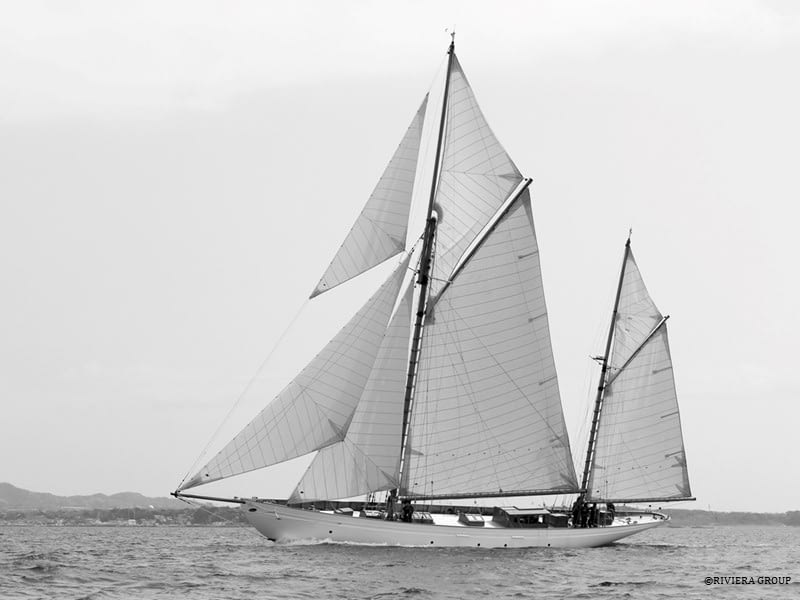
The Hampshire Telegraph described it as "a fine example of contemporary yachting architecture with the latest technology in overall design, placement and equipment."
In the summer of 1927, Gwendolen sailed extensively along the south coast of England. But the following winter - after the death of the owner - the yacht was sold. Its subsequent owners included Waldemar Grae. He also owned the 6m Morgan Giles Dana.
The boat gained the greatest popularity after changing several owners. Then racer Duncan Hamilton took her under his wing for four years in the 1960s. During this time she was based in Monaco.
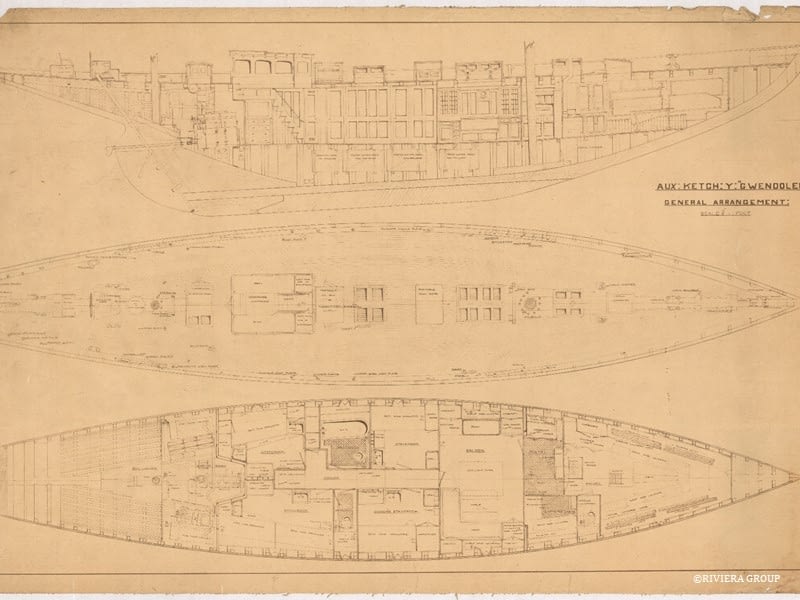
After 13 years, Cynara became the property of Japan. By the middle of 1973, she stood off the coast of the city of Misaki.
The yacht remained in service and continued to make local cruises, but after a while it became obvious that she would not be hampered by a serious restoration.
Team searchIn 2015, it was decided to start the renovation. There was one problem: although Japan is one of the leading shipbuilding countries in the world, companies or individuals with the skills and experience required to restore a yacht like the Cynara did not exist.
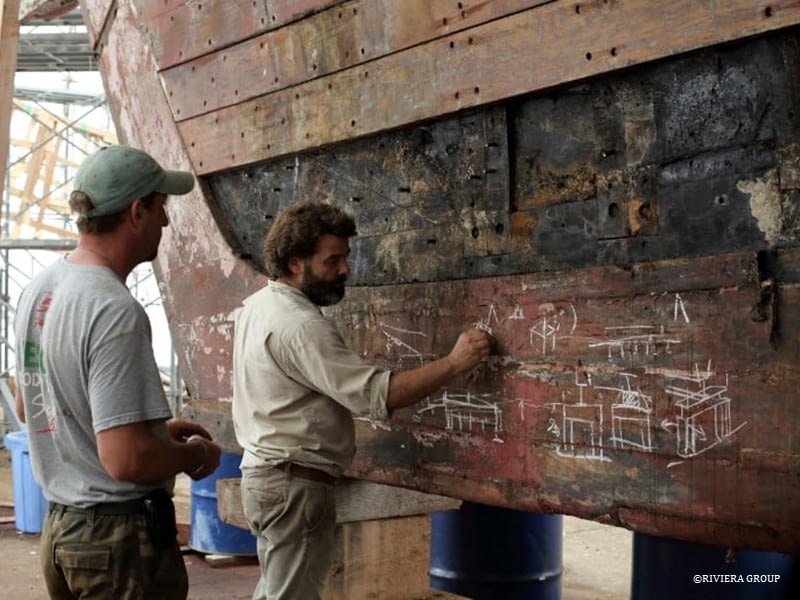
A sensible plan would be to return the yacht to a European shipyard, and this was the first option considered. Moreover, the shipyards in France and Great Britain were considered. But then it was decided to do something special: rebuild Cynara in Japan.
The yacht owner made contact with two experienced British shipbuilders Ben Hobbs and Paul Harvey. They have been specializing in the restoration of various types of ships for about 20 years.
After several visits to inspect the vessel in 2017, they were invited to take on the project. The restoration was carried out at the Riviera Seabornia Marina, located near Mount Fuji. Initially, there was absolutely no relevant infrastructure.
Start of work on Cynara“The first six months were very difficult,” Harvey told me. “Basically, we had to build a shipyard from scratch. We had to equip a shed, buy machines, build benches, and so on. It took us a while to get started. "
During the restoration, other specialists from Europe were also involved. Among them:
- Project Leader Fairgus Brian, who visited Japan for a few days every couple of months, but otherwise continued to participate in the project from his base in Nice;
- Paul Spooner, who handled naval architecture and layout changes and detailed designs for a variety of deck fittings;
- Chuck Demanja, who was in charge of the rig;
- the Centreline Marine team for stacking and caulking the deck; another Stirling and Son team for caulking, sanding and cladding;
- and 14 qualified shipbuilders from various European countries.
In total, nearly 50 people from a dozen countries outside of Japan made significant contributions to the project.
Several Japanese workers worked with the European specialists, none of whom had experience working on a yacht of this type - and indeed on any vessel in most cases. The team included house builders (almost all houses in Japan are wooden), a farmer, a fisherman and a gardener. Unsurprisingly, Harvey and Hobbs had to devote some of their time to teaching them. Although Harvey says, "They already had exceptional skills."
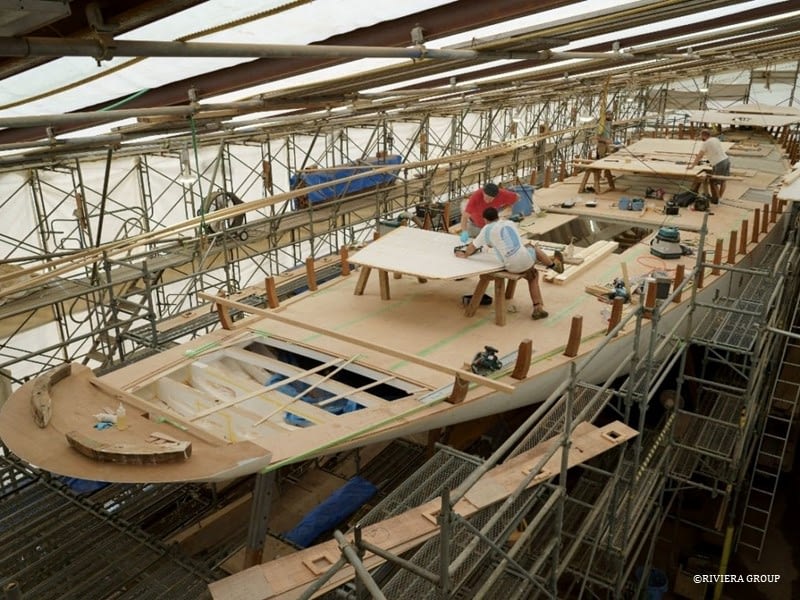
“It was more a matter of teaching them techniques to give them confidence, and we never had to show them something twice. They got better and better over time. "
The engineering work was carried out under the direction of Hobbs. However, most of them were carried out by Pascal Chados, a French citizen who was originally trained as an engineer in the French navy. Pascal moved to Japan about 30 years ago and has worked mainly as a baker since then. “Every project has to have a dedicated baker,” Harvey recalls. “We had great snacks all the time.”
Hull restoration The first major problem that needed to be addressed was the fact that the ship's hull had a large crack. She was about 6 inches (150 mm) the length of the boat.
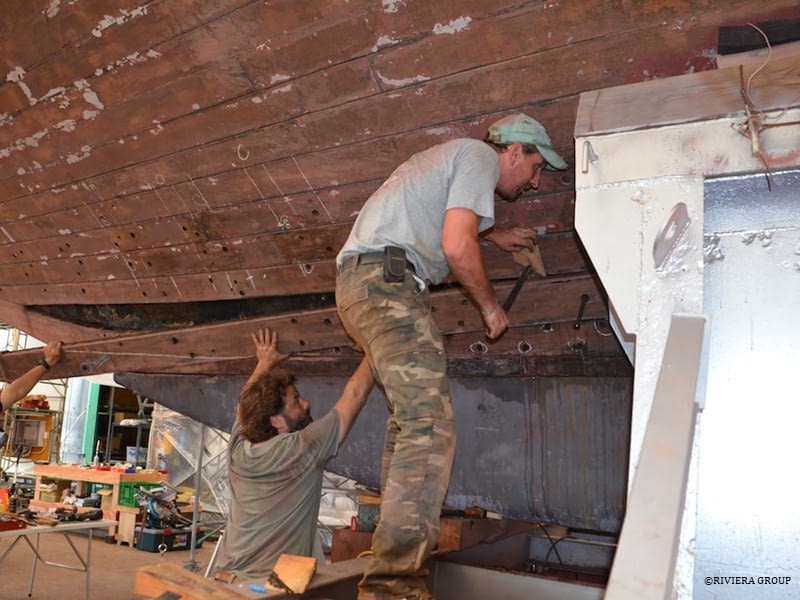
To solve this problem, the ship had to be disassembled significantly first. After that, a large H-shaped beam was installed under the wooden keel. With the help of a complex system of jacks under it and in other parts of the hull, the problem was solved.
Most of the oak frames needed replacing though. Approximately 90% 2 "(50mm) teak deck has been found to be recyclable.
The deck has been completely covered with new laminated beams in English oak and teak carlin. On top of this splendor, planks of 3/8 "(9 mm) Canadian cedar were stacked, followed by 3/4" (18 mm) plywood and 3/4 "(18 mm) thick teak flooring.
Great efforts have been made to preserve as much of the original deck as possible. Therefore, only the round hatch for the sailing locker in the stern had to be completely replaced. Everything else has undergone minor repairs and modifications, including glass upgrades. Likewise, many of the original deck and hull fittings have been repaired and reinstalled.
Restoration of the rest of the CynaraSuddenly the film "Arrivederci Baby", in which the yacht was "filmed", helped. There were many scenes in the film where many small details were clearly visible. This is what the restorers relied on when, for example, they were reworking the equipment.
So, it was thanks to the film that the new winches were installed in their respective places. By the way, four of the nine winches were electric.
The interior layout consists of four cabins, two on each side. Full beam saloon with starboard dining area and comfortable seating. A galley to port and a master stateroom to starboard, a shower to starboard, followed by six berths and a large crew table.
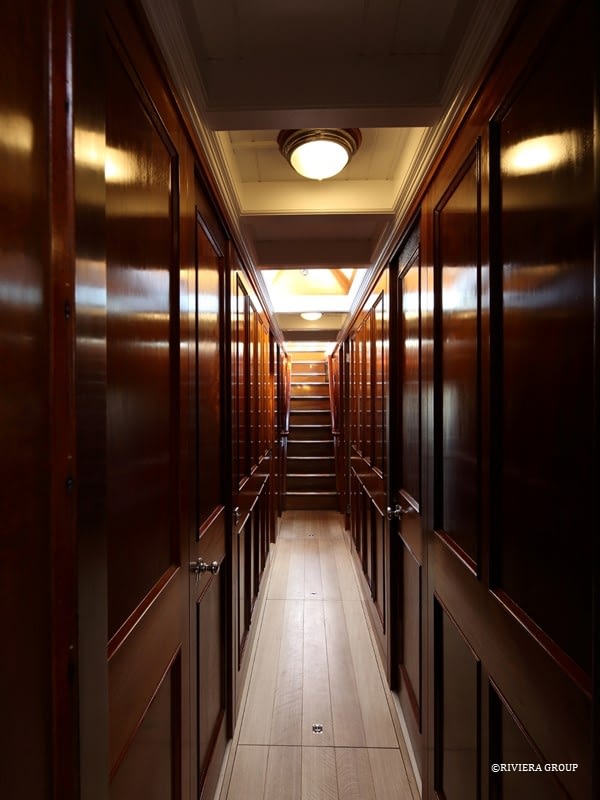
Several changes were made to the layout, including the addition of bathrooms with showers for the master stateroom on the starboard side and the guest stateroom on the port side.
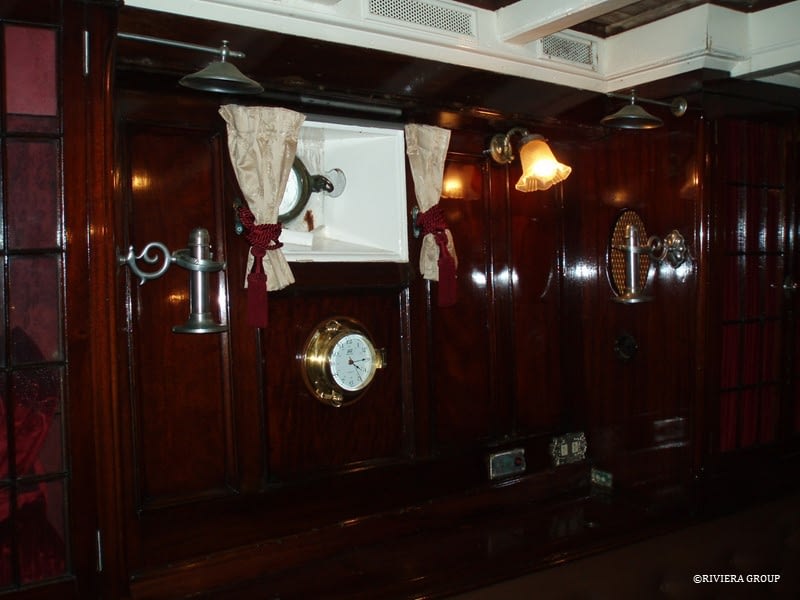
The vast majority of the original Honduran mahogany interiors and furnishings have been preserved, refurbished and refurbished. Corner seats for both bow guest cabins from original blueprints were in need of refurbishment.
Internal yacht systemsFrom an engineering point of view, the Cynara was a kind of "time capsule" at the beginning of the restoration. Her riveted iron tanks and lead pipelines - presumably the original ones - were still connected and in use. The lead-insulated wiring was still in place, but with new wiring installed on top. The engine room was "like the entrance to hell," says Harvey, "dark and dismal."
The Yanmar engine, which is about 25 years old, was rebuilt, but almost everything else had to be updated. The ship now has a 5 kW Cummins Onan MDKBH generator, Schenker water cannon, Dometic air conditioner (not available before), full-length Virifigion refrigerator / freezer, Force 10 electric oven and stove, Dometic electric toilets.
Difficulties with CynaraThe restoration team faced difficulties in finding wood and other materials, at least initially. At first they imported various materials from Europe, but then they began to find local suppliers.
“We soon realized that everything we needed was here, but we just needed to know where to find it and how to ask for it,” Harvey says. Among other difficulties were those caused by natural events, including small earthquakes and typhoons, which caused significant damage to the roof of the shipyard half a dozen times.
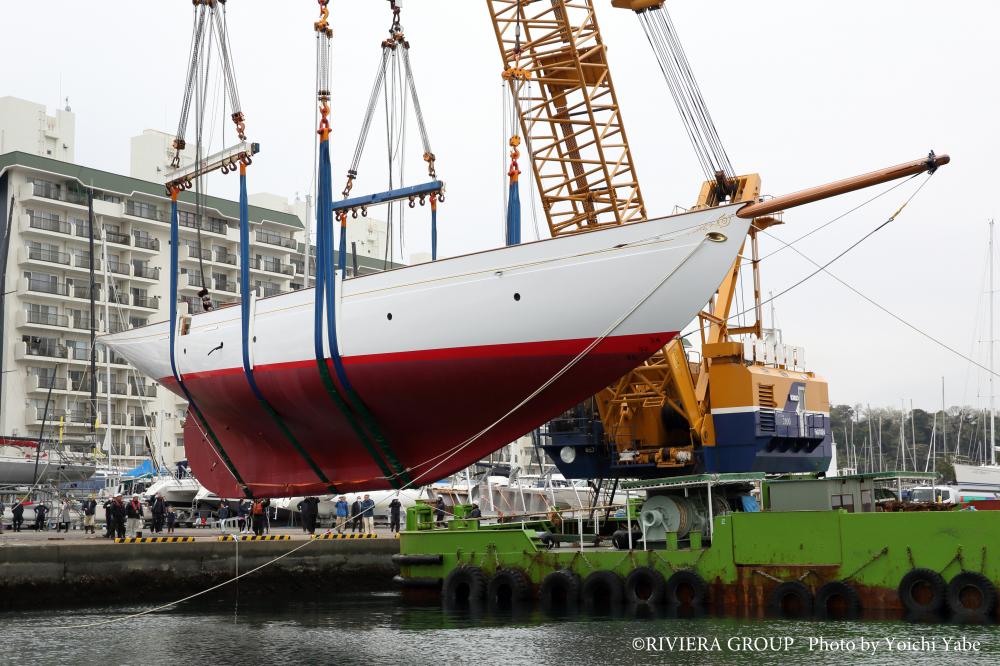
The owner of the boat, who visited Sinara almost weekly throughout the restoration period, is delighted with the result. “We are proud that we carried out the restoration work here in Japan, and that we were able to complete it together with the Japanese carpenters,” he said. “Since the project is unprecedented in Japan, it was not easy. And as soon as you think you have solved one problem, you are faced with another. It was an ongoing process every day. "
After the completion of the restoration, Sinara was to be used as a VIP yacht. Alas, covid restrictions prevented this.
In 2028 she will return to Europe, the Solent and the Mediterranean, where Mr. Watanabe is particularly keen to race the Regates Royales in Cannes. “I can't wait to show the beautiful Cynara to people around the world and tell them its story,” concluded the owner.
Source